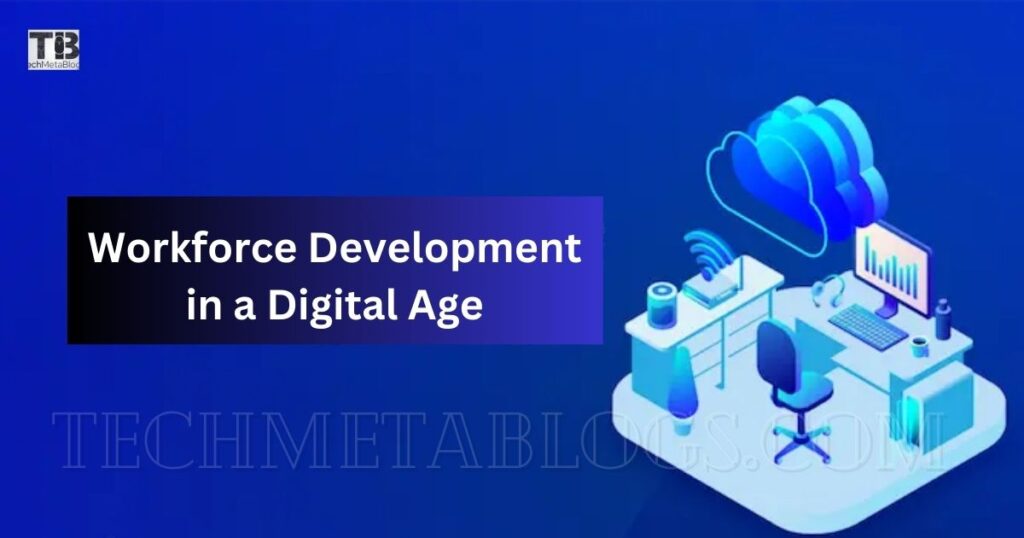In today’s complex financial landscape, integrating charitable giving into your financial planning isn’t just about generosity – it’s about creating a lasting impact while maintaining financial stability.
CNO’s approach to charitable giving financial planning helps individuals and organizations align their philanthropic goals with sound financial strategies, creating a framework for sustainable giving that benefits both donors and recipients.
Understanding Charitable Giving
The landscape of charitable giving has evolved significantly over the past decade. Today’s donors seek more than just tax benefits; they want to create meaningful change while ensuring financial security.
CNO philanthropic financial planning addresses this dual objective by providing comprehensive strategies that balance generosity with fiscal responsibility.
Recent studies show that strategic charitable giving has increased by 25% among high-net-worth individuals who implement structured financial planning.
This trend reflects a growing understanding that effective philanthropy requires careful financial orchestration. Donors can maximize their impact through CNO financial guidance while maintaining their financial health.
The Role of CNO Charitable Giving Financial Planning Group in Charitable Giving

Supporting Local Communities
CNO’s commitment to community development forms the cornerstone of their charitable giving framework.
Their strategic financial planning for charities has helped numerous local organizations achieve sustainable growth while maximizing donor impact.
For instance, CNO’s community investment program has facilitated over $50 million in charitable contributions across various sectors, including education, healthcare, and social services.
Employee Engagement in Charitable Giving
Employee participation stands at the heart of CNO’s philanthropic initiatives. Employees can participate in matching gift programs and volunteer opportunities through their comprehensive giving plan with CNO expertise. The company’s innovative approach includes:
- Double-matching employee contributions during specific campaigns
- Paid volunteer time off (VTO) for community service
- Employee-led charitable committees with discretionary funding
- Regular workshops on charitable giving strategies
Strategic Philanthropy
CNO’s approach to charitable giving strategies emphasizes long-term impact through careful planning and execution. Their framework for strategic philanthropy includes the following:
Component Purpose Impact Measurement
Goal Setting Define clear objectives Quarterly progress reviews
Resource Allocation Optimize giving impact ROI analysis
Impact Assessment Track effectiveness Annual impact reports
Stakeholder Engagement Ensure alignment Regular feedback surveys
Integrating Charitable Giving into Financial Planning
Incorporating charity into financial goals requires careful consideration of multiple factors.
CNO financial plan for nonprofit organizations provides a structured approach to integrating philanthropic objectives with overall financial strategy. This includes assessment of:
- Current financial position and giving capacity
- Long-term financial objectives
- Tax implications and benefits
- Estate planning considerations
- Investment strategies for giving
Setting Clear Goals
Effective charitable giving starts with well-defined objectives. CNO’s financial strategies for philanthropic success help donors establish measurable goals aligning with their charitable aspirations and financial capacity.
This process involves creating detailed giving plans that consider both immediate impact and long-term sustainability.
Choosing the Right Charities
Selecting appropriate charitable organizations is crucial for maximizing giving impact.
CNO charitable giving financial planning includes comprehensive due diligence processes to evaluate potential recipients. Consider these key factors:
- Financial transparency and accountability
- Program effectiveness and efficiency
- Alignment with donor values and objectives
- Sustainable operational models
- Track record of impact
Leveraging Tax Benefits
Understanding and maximizing tax benefits through charitable contributions is essential for sustainable giving.
CNO’s expertise in navigating charitable trusts and estate planning helps donors optimize their tax positions while maintaining their charitable commitments. This includes guidance on:
- Charitable remainder trusts
- Donor-advised funds (DAFs)
- Qualified charitable distributions
- Estate tax planning strategies
- Gift tax considerations
Revolutionizing Financial Technology Integration
Technology integration has become paramount for sustainable growth in today’s rapidly evolving financial landscape.
Organizations must embrace digital transformation while maintaining security and efficiency. Recent studies indicate that companies implementing comprehensive fintech solutions see an average 35% increase in operational efficiency and a 28% reduction in processing costs.
This transformation requires careful planning, employee training, and systematic implementation strategies.
Sustainable Investment Strategies for Long-term Growth
Sustainable investing has moved beyond environmental considerations to encompass social and governance factors.
Modern portfolio theory now incorporates sustainability metrics alongside traditional financial indicators.
Investment managers are increasingly focusing on companies that demonstrate strong ESG performance, with data showing these investments often outperform traditional portfolios over extended periods.
Digital Asset Management in the Modern Era
The rise of digital assets has created new opportunities and challenges for financial institutions.
Organizations must develop robust frameworks for managing these assets, from cryptocurrency to tokenized securities.
This includes implementing specialized security protocols, maintaining regulatory compliance, and effectively training staff to handle these new asset classes.
Risk Management in an Interconnected Economy
Global economic interconnectedness requires sophisticated risk management approaches. Organizations must consider direct risks and secondary and tertiary impacts of global events.
Advanced analytics and predictive modeling have become essential tools for identifying and mitigating potential risks before they materialize.
Customer Experience Enhancement Through Data Analytics
Data-driven customer experience optimization has become a critical differentiator in financial services.
Organizations leveraging advanced analytics can predict customer needs, personalize services, and significantly improve satisfaction rates. This requires a careful balance between personalization and privacy concerns.
Operational Excellence Through Process Automation
Process automation represents a significant opportunity for operational improvement. From routine tasks to complex decision-making processes, automation can enhance accuracy while reducing costs.
The key lies in identifying appropriate processes for automation while maintaining human oversight where necessary.
Global Market Expansion Strategies
Expanding into global markets requires careful consideration of local regulations, cultural differences, and market dynamics.
Successful expansion strategies involve detailed market analysis, strong local partnerships, and flexible operational models that can adapt to different regulatory environments.
Workforce Development in a Digital Age

The evolution of financial services requires continuous workforce development.
Organizations must invest in training programs that prepare employees for emerging technologies and changing market conditions.
This includes developing technical and soft skills necessary for success in a digital environment.
Regulatory Compliance and Risk Assessment
Maintaining regulatory compliance while pursuing innovation requires sophisticated risk assessment frameworks.
Organizations must develop systems that adapt to changing regulations while maintaining operational efficiency. This includes implementing robust monitoring systems and regular compliance audits.
Innovation Management and Product Development
Successful innovation management requires structured idea generation, evaluation, and implementation approaches.
Organizations must create environments that foster innovation while focusing on practical implementation and market relevance.
Strategic Partnership Development
Building effective strategic partnerships has become crucial for competitive advantage. Organizations must identify potential partners that complement their strengths and compensate for weaknesses.
This requires careful evaluation of partnership opportunities and structured approaches to relationship management.
Client Portfolio Optimization
Portfolio optimization strategies must evolve to meet changing market conditions and client expectations.
This includes incorporating new asset classes, considering environmental and social impacts, and leveraging advanced analytics for better decision-making.
Digital Security and Data Protection
As financial services become increasingly digital, security and data protection have become critical concerns.
Organizations must implement comprehensive security frameworks that protect against evolving threats while maintaining operational efficiency.
Market Intelligence and Competitive Analysis
Effective market intelligence requires sophisticated approaches to data collection and analysis.
Organizations must develop systems for monitoring market trends, competitive actions, and emerging opportunities. This includes leveraging both traditional and alternative data sources.
Performance Metrics and Success Measurement
Developing effective performance metrics requires careful consideration of both financial and non-financial indicators.
Organizations must create balanced scorecards that reflect their strategic objectives while providing actionable insights for improvement.
This includes considering long-term sustainability alongside short-term performance measures.
Frequently Asked Questions
How can I maximize tax benefits through CNO’s charitable giving programs?
CNO’s financial advisors help structure your charitable contributions to optimize tax advantages through various vehicles like donor-advised funds and charitable trusts.
Our team ensures your giving strategy aligns with current tax regulations while maximizing deductions.
What’s the minimum amount required to establish a charitable giving plan with CNO?
While CNO works with donors of various capacities, we typically recommend starting with a minimum of $10,000 for structured charitable giving plans.
However, we offer flexible solutions tailored to different financial situations and giving goals.
How does CNO help ensure my charitable contributions make a meaningful impact?:
Our team conducts thorough due diligence on charitable organizations and helps track the impact of your contributions through detailed reporting and assessment tools.
We also provide regular updates on how your donations are affecting positive change.
Can CNO help integrate charitable giving into my estate planning?
Our financial advisors specialize in incorporating charitable giving into comprehensive estate plans, helping you create a lasting legacy while potentially reducing estate tax burden through strategic philanthropic planning.
What types of charitable giving vehicles does CNO recommend?
CNO provides guidance on various giving vehicles, including donor-advised funds, charitable remainder trusts, private foundations, and direct giving strategies.
We help select the most appropriate options based on your financial situation and philanthropic objectives.
Conclusion
Through CNO’s comprehensive financial planning, strategic charitable giving creates a powerful bridge between philanthropic aspirations and financial prosperity.
As we’ve explored throughout this guide, effective charitable giving requires thoughtful planning, clear objectives, and expert guidance.
CNO charitable giving financial planning provides the framework needed to make meaningful contributions while maintaining financial stability.
By leveraging tax-efficient giving strategies, choosing the right charitable vehicles, and maintaining a long-term perspective, donors can create a lasting impact in their communities while building a meaningful legacy.
Remember, successful philanthropy isn’t just about the amount given – it’s about creating sustainable, impactful contributions that align with your financial capabilities and vision for positive change.
Through careful planning and strategic execution, CNO helps ensure that your charitable giving achieves maximum impact while supporting your overall financial well-being.













